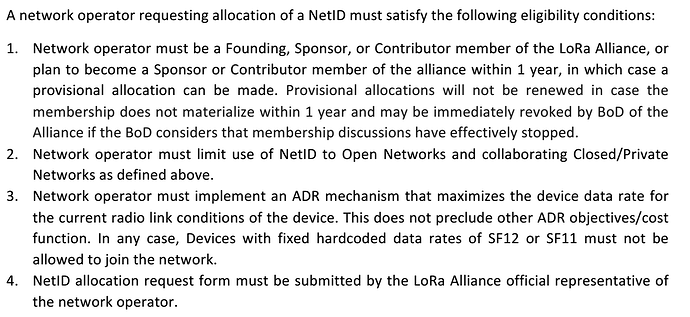As an aside: network providers (such as TTN) are required to actively block devices that always send on SF11 or SF12, to keep their LoRa Alliance NetID: Devices with fixed hardcoded data rates of SF12 or SF11 must not be allowed to join the network.
2 Likes
